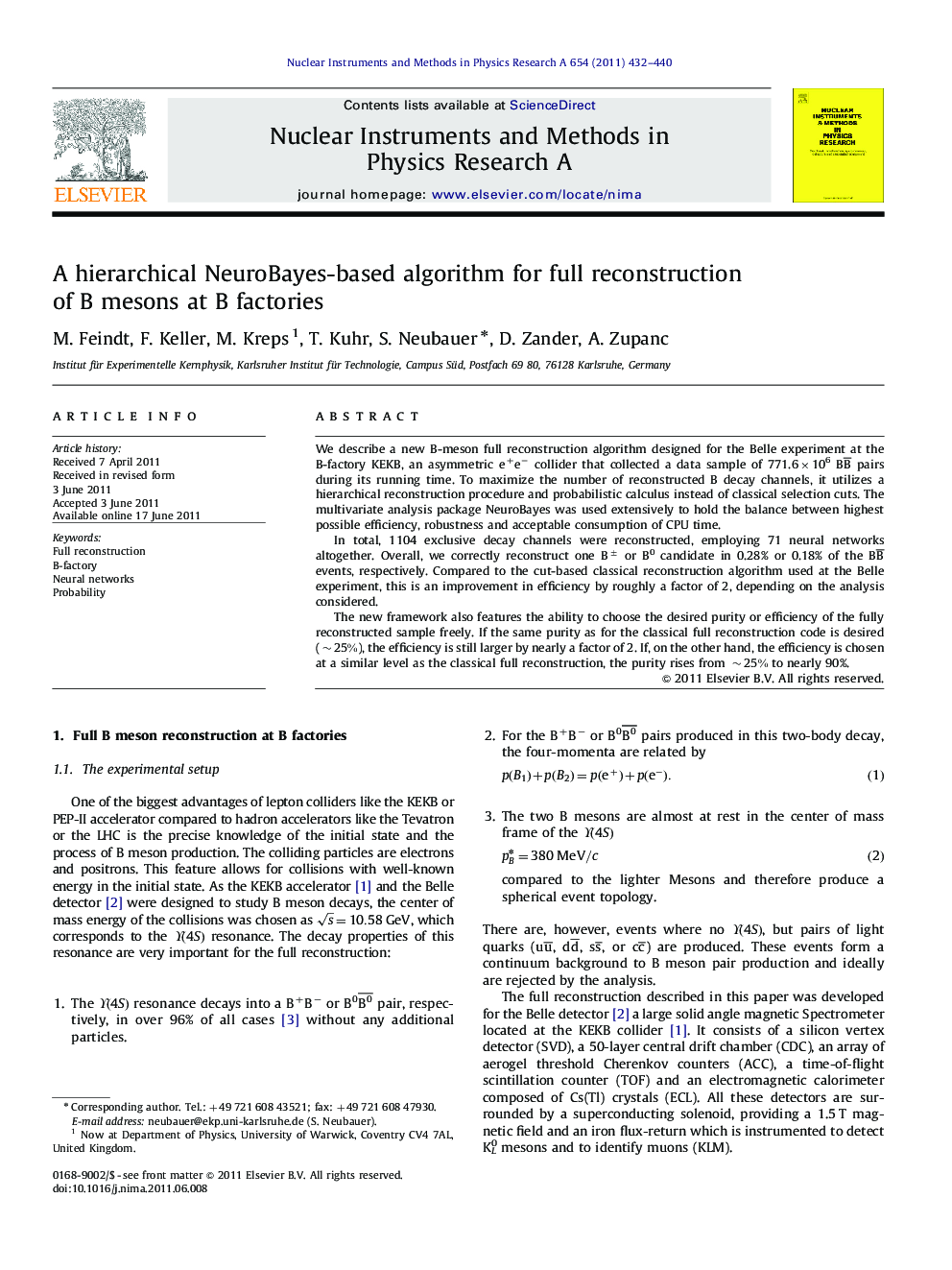| Article ID | Journal | Published Year | Pages | File Type |
|---|---|---|---|---|
| 1824278 | Nuclear Instruments and Methods in Physics Research Section A: Accelerators, Spectrometers, Detectors and Associated Equipment | 2011 | 9 Pages |
We describe a new B-meson full reconstruction algorithm designed for the Belle experiment at the B-factory KEKB, an asymmetric e+e− collider that collected a data sample of 771.6×106BB¯ pairs during its running time. To maximize the number of reconstructed B decay channels, it utilizes a hierarchical reconstruction procedure and probabilistic calculus instead of classical selection cuts. The multivariate analysis package NeuroBayes was used extensively to hold the balance between highest possible efficiency, robustness and acceptable consumption of CPU time.In total, 1104 exclusive decay channels were reconstructed, employing 71 neural networks altogether. Overall, we correctly reconstruct one B± or B0 candidate in 0.28% or 0.18% of the BB¯ events, respectively. Compared to the cut-based classical reconstruction algorithm used at the Belle experiment, this is an improvement in efficiency by roughly a factor of 2, depending on the analysis considered.The new framework also features the ability to choose the desired purity or efficiency of the fully reconstructed sample freely. If the same purity as for the classical full reconstruction code is desired (∼25%∼25%), the efficiency is still larger by nearly a factor of 2. If, on the other hand, the efficiency is chosen at a similar level as the classical full reconstruction, the purity rises from ∼25%∼25% to nearly 90%.
► A method for full reconstruction of B-mesons was built. ► A hierarchical model with multivariate techniques in each step was used. ► Instead of cuts, probabilities were calculated and feed to higher stages. ► Compared to cut-based methods we achieved a factor of 2 in efficiency.
